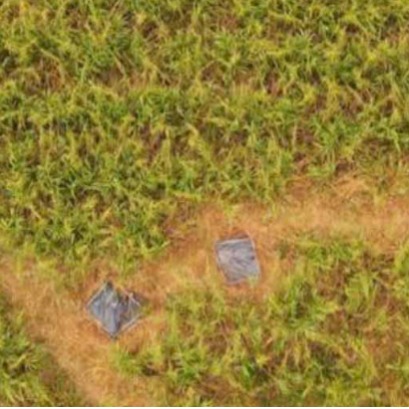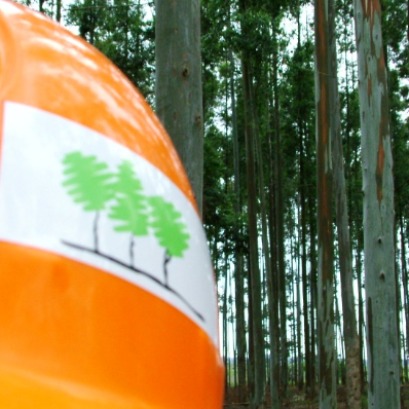
Trees tell stories: the fascinating science of dendrochronology
A fascinating science, dendrochronology transforms tree rings into a vast archive of climate history, revealing connections between the past and the future. With each ring, a new story of resilience and adaptation comes to life.
The imprint of the climate, fires and even human activity is recorded, year after year, in the wood of the trees. The science that deciphers this record is dendrochronology, a discipline that, with a simple cylinder of wood extracted without damaging the tree, can date ancient buildings, reconstruct centuries-old droughts and calibrate the carbon 14 clock. What is dendrochronology Dendrochronology is the study of the growth rings of trees to date events and reconstruct past environmental conditions. It was born at the beginning of the 2�th century by the American astronomer Andrew Ellicott Douglass, who discovered that annual variation in the width of the rings responded to climatic changes, especially the availability of moisture. The basis is simple: in temperate and cold climates, many species each year form a ring composed of earlywood (lighter and more porous) and latewood (denser and darker). Wet years usually produce wider rings; dry, narrower years. By comparing ring patterns between different trees and overlapping them temporally, a “master chronology” is created that can go back thousands of years.What it studies and how it studies itThe central focus is time: when the rings grew and what conditions shaped them.To do this, the discipline combines several techniques:• Sampling with Pressler augers to extract cores from the trunk without cutting down the tree.• Crossdating, which aligns ring patterns between multiple specimens to assign an exact date to each ring.• Measurement of variables such as ring width, wood density and, increasingly, chemical signals such as stable isotopes of carbon and oxygen.• Statistical standardization to separate the climatic signal from the biological noise of the trees growth.• Replication – several trees per site – and the selection of species “sensitive” to the local climate are key to extracting robust signals.• In addition, dendrochronologists compare their series with instrumental records, and contribute to global databases such as the International Tree-Ring Data Bank (ITRDB).What it is forThe applications of dendrochronology have expanded far beyond botany.Among the most relevant:• Climate of the past and present. The chronologies allow temperatures, precipitation and droughts to be reconstructed with annual or seasonal resolution. Atlases such as the Monsoon Asia Drought Atlas or the North American Drought Atlas map centuries of water variability, providing context to contemporary droughts and water management.• Carbon calibration 14. Radiocarbon dating depends on precise calibrations. Millennial chronologies, such as those of long-lived pines in North America or oaks in central Europe, anchor the absolute radiocarbon calendar, improving archaeological accuracy.• Archeology and heritage. Wood in historic buildings, sunken ships or painting panels can be dated with annual precision, which helps to authenticate works and reconstruct construction techniques and trade routes.• Fires and riots. The scars on the rings record the passage of fire. Fire history series inform forest management policies and fire regime restoration.• Hydrology and natural hazards. The rings reflect floods and flows; They are used to expand river records and evaluate the risk of flooding or the persistence of megadroughts.• Geomorphology and volcanism. Trees leaning, buried or damaged by lahars and landslides preserve the date of the event, useful for mapping hazards and evaluating recurrences.• Forensic and legal. The origin of wood can be traced by its dendrochronological “footprint”, supporting the fight against illegal logging.• Ecology and physiology. Combined with isotopes, dendrochronology reveals how plants regulate water and carbon under stress, key to projecting the impact of climate change on forests. Limits and challengesNot all trees tell the story with the same clarity. In humid tropical areas, many species do not form discernible annual rings. Disturbances such as pruning, frost, or insects can generate false or missing rings, and some species respond more to temperature than rainfall, or vice versa, complicating interpretation. Additionally, human activity—irrigation, forest management, urbanization—can mask environmental signals. Therefore, the discipline requires careful statistical controls and multiple lines of evidence. A living archive of thousands of years Few natural records combine the temporal extension with the annual precision of tree rings. Chronologies of oaks in Germany and Ireland exceed 1�,��� years when subfossil and living woods are concatenated; Long-lived pines in the western United States maintain continuous series of almost 5,��� years. This “living archive” makes dendrochronology an irreplaceable tool for understanding the past and making better-informed decisions about the future: from water planning to protecting forests and heritage. Towards the future: beyond ring width The discipline is renewed with techniques such as high-resolution density, blue intensity reflectance, microanatomy analysis and isotopes stable. Cross-referencing with satellite imagery and machine learning promises to scale inferences from individual trees to entire landscapes. In times of climate change, accurately reading what trees say is no longer just a scientific curiosity: it is a necessity.
IT MAY INTEREST YOU
 Vida Silvestre and ArgenINTA promote a national consultancy for the restoration of forest landscapes in Argentina
Vida Silvestre and ArgenINTA promote a national consultancy for the restoration of forest landscapes in Argentina
The Argentine Wildlife Foundation and the ArgenINTA Foundation signed a technical cooperation agreement to begin a consultancy aimed at the Restoration of Forest Landscapes (FPR) in the seven forest regions of the country. The work seeks to generate technical and scientific inputs that guide the design of provincial and national restoration programs, in support of the implementation of Law No. 26,331 on Native Forests.
 Between Rivers | Everything ready for the traditional INTA Concordia and AIANER Forestry Days
Between Rivers | Everything ready for the traditional INTA Concordia and AIANER Forestry Days
The traditional Entre Ríos Forest Days, which this year celebrate their 39th edition, will take place on November 7 from 8 a.m. to 6 p.m. at the INTA Concordia facilities, located at Yuquerí Station and Railway tracks.
 Black River | Government and institutions promote a balanced development model between production and the environment in Valles Irrigados
Black River | Government and institutions promote a balanced development model between production and the environment in Valles Irrigados
Within the framework of the impulse that the Provincial Government has been giving to forestry policy, a joint tour was carried out between the Forestry Directorate of the Ministry of Economic and Productive Development, the Provincial Department of Water (DPA), the National Institute of Agricultural Technology (INTA) and the consulting firm Lygnum.





















